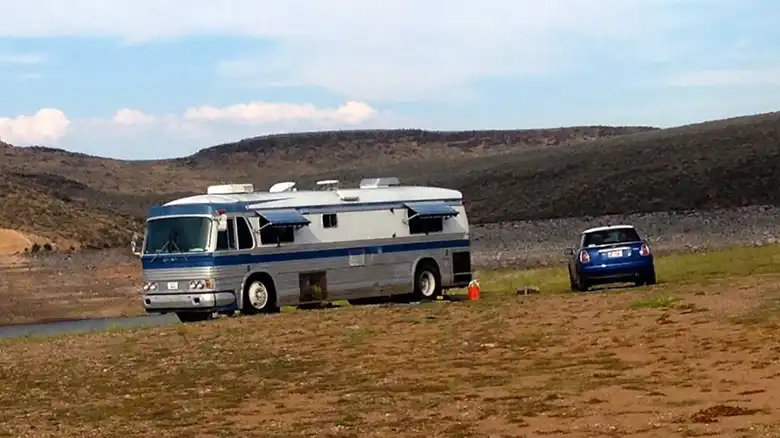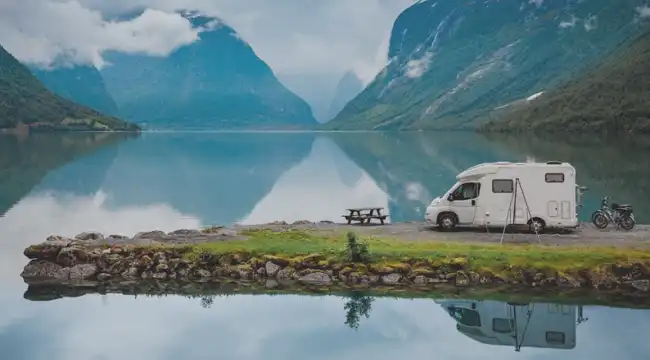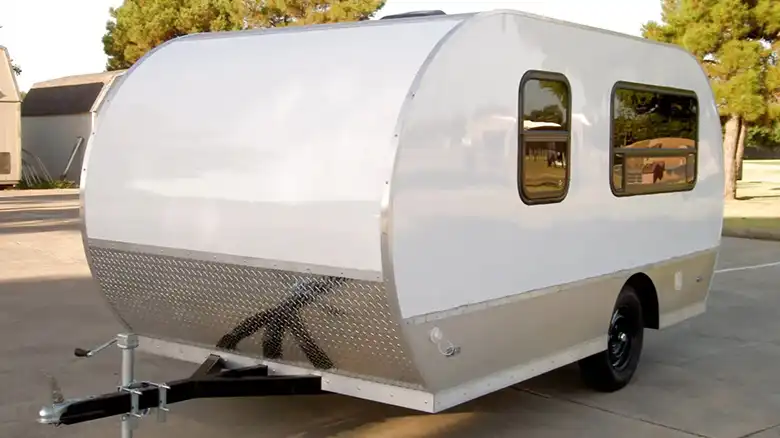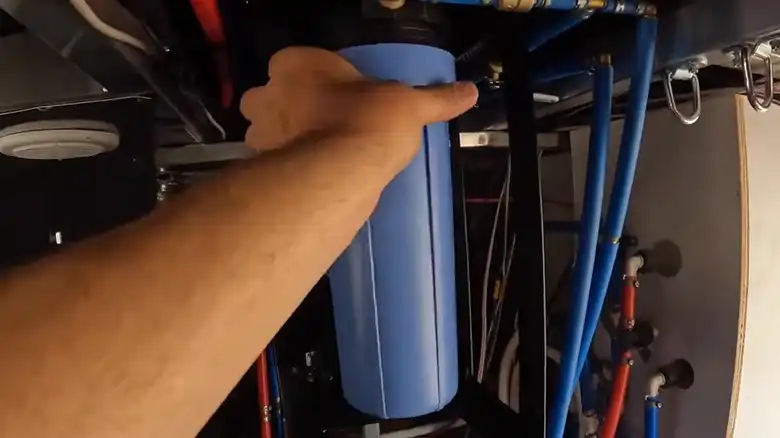Trading traditional homes for the freedom of the open road in a van or RV offers the ultimate flexibility to roam vast swaths of incredible public lands across America. Waking up to golden light filtering through swaying trees or the crash of ocean waves outside your windows renews your appreciation for nature’s beauty.
But between vehicle payments, gas fill-ups, and camping fees, expenses add up fast chasing endless horizons. Luckily, you can cut costs substantially by utilizing free boondocking sites on public lands for weeks at a time when adventuring. With some preparation and resourcefulness, discovering spectacular yet affordable campsites helps make the van life dream accessible and sustainable.

What’s Free Camping/Boondocking?
Boondocking refers to camping outside formal campgrounds by being completely self-reliant for necessities like power, water, bathrooms, climate control, etc. without plugging into external utilities. Also called “dispersed camping,” boondockers occupyprimitive sites on public lands like National Forests, BLM tracts, and some State Park areas or private property.

Public Land Boondocking offers the most plentiful free options. Regulations allow parking on most Bureau of Land Management, National Forest, and other government-managed acreage for around 14 days max before requiring significant relocation. Stays may be limited to roadsides or more remote backcountry with proper wilderness permits. Very minimal development exists on these sites.
Commercial Property Boondocking involves staying in parking lots of businesses that allow, encourage, or even depend on RV patronage. Casinos often permit free nightly parking to entice gambling. Big box stores like Cabela’s, Bass Pro Shops, and several grocery chains also allow campers to support sales. Upscale outlets with high-end customer service like wineries, golf courses, and airports catering to pilots frequently host RVers in designated areas.
Private Property Boondocking through online hospitality networks like Harvest Hosts, Boondockers Welcome, Overnight RV Parking, and Thousand Trails builds communities around farms, museums, and attractions that invite self-contained RVs to utilize grounds or facilities. Members pay annual access fees while properties enjoy patronage. Guests are welcomed as visitors rather than “campers.”
Urban Boondocking involves staying in cities overnight where parking is allowed, rather than seeking rural seclusion. Municipal ordinances permitting, you can park on quiet neighborhood residential streets, industrial area service roads, big box store margins, or transit station Park & Ride outskirts without facilities. This clandestine option works best for very small vehicles drawing little attention.
The common denominator among all boondocking/free camping options is relying entirely on the habitation resources within your rig without any hookups. But the profound freedom and natural settings possible make this modest compromise worthwhile!
Benefits of Using Free Camping Spots
Besides saving money, free boondocking sites offer other advantages to overcrowded commercial campgrounds, including –
More solitude and quiet since fewer people use them, creating peaceful atmospheres ideal for relaxing or getting work done undisturbed. You may have an entire canyon or lakeshore to yourself!
Increased flexibility – since reservations aren’t required, you can modify travel plans spur-of-the-moment based on weather, road conditions, personal motivation, or recommendations from other travelers.
The ability to make last-minute decisions on destinations keeps things spontaneous. If a stunning wildflower meadow or archeological site captures your attention, just pull over and set up camp!
Boondocking enables visiting more remote, hard-to-access places not served by formal campgrounds with transient visitors like National Park backcountry, obscure waterfalls, historic ghost towns, and off-road mountain passes other RVs can’t reach.
What to Expect at Free Campsites?
While minimal or no fees make boondocking enticing, you trade certain comforts and infrastructure for big cost savings and limitless possibilities. Things to anticipate include –
Lack of Any Facilities
No running water, showers, toilets, electric hookups, picnic tables, fire rings, or trash bins exist. You must be entirely self-reliant, with backup systems for necessities.
Potentially Rough Roads
Reaching distant public land sites may require slow, bumpy drives on unpaved backroads or even rugged 4WD terrain. Watch clearance carefully! Proper maintenance and high-ground clearance help reach remote locations.
Little or No Cell Service
Don’t expect mobile signal, internet data coverage, or GPS connectivity in the middle of nowhere. Offline mapping apps, satellite communicators, radio repeaters, and paper maps ensure you can still navigate.
Responsible Outdoor Ethics
Practice strict Leave No Trace principles, packing out all trash, keeping campfire impacts minimal, not polluting water sources, respecting wildlife, and leaving landscapes pristine. No facilities exist for garbage disposal or sanitation, so you must account for all waste.
Personal Safety Considerations
Take precautions like locking doors, keeping alert to wildlife interactions, having communication and recovery gear, and letting others know where you’ll be in case emergencies arise far from help. Traveling in groups provides extra security.
Where to Find Free Campsites?
Many options exist for finding cost-free overnight sites if you know where to look on public lands. Great starting points include –
Public Lands
Vast tracts of relatively undisturbed Bureau of Land Management, National Forest, and State Park lands grant 2-week overnight access. Lands are minimally developed but offer remote beauty.
Bureau of Land Management (BLM)
Over 245 million acres of BLM public lands grant free boondocking with few restrictions beyond 14-day stays. Lands offer dispersed primitive sites far from crowds.
National Forests
America’s 154 national forests encompass 193 million acres of rugged mountains, old-growth forests, and untouched meadows available for boondocking 14 days per site. More secluded sites exist with greater planning/effort.
State/County/City Parks
Some local parks allow limited self-contained RV camping for free but confirm ahead since most operate as businesses requiring fees. Still, these areas provide great scenery and amenities nearby.
Business Parking Lots
Many retail chains permit free overnight RV parking to encourage shopping. Common options include –
Walmart, Cracker Barrel, Cabela’s, Camping World, Bass Pro Shops, Cabela’s – Typically allow 24-hour stops.
Casinos, Fitness Centers, Hardware Stores, and Churches – May allow 1-3 nights parking. Always ask management first.
Highway Rest Stops & Travel Centers
Most states maintain rest areas offering bathrooms, vending, and overnight large vehicle parking along interstate highways which provide great stopping points when traveling between destinations. Some states restrict overnight parking, so check regulations.
Many private truck stops like Love’s, Flying J, and TA Express have large vehicle lots with showers, laundry, propane fill-up, and dining available. Most allow free overnight parking.
Stealth Camping
If no free public land sites are available nearby, some van dwellers practice stealth camping where allowed –
a) Parking on city streets or in public parking garages
b) Tucked away corners of big box store lots
c) Residential neighborhoods (with care not to disturb residents)
Scope out locations with discreet signage during daylight first. Avoid tickets by moving locations every 24 hours.
How to Find Free Campsites Across America?
With endless BLM tracts, National Forests, and recreation areas granting 2 weeks of access across America, you just need to pinpoint the best zones. Useful research strategies include –
Maps & Atlases
Paper Benchmark road atlases detail public lands at state and county levels. National Geographic Adventure Paper Maps show legally dispersed camping zones within National Forests and Parks. BLM’s Recreation One Stop maps camping on their lands. AtlasObscura highlights quirky exploration destinations.
Camping Clubs
Organizations like Harvest Hosts, Boondockers Welcome, and Thousand Trails offer members free parking at wineries, farms, museums, and other attractions or on private, members-only lands.
Apps & Websites
Digital tools like FreeRoam, iOverlander, Campendium, Dyrt Pro, FreeCampsites.net, Campfire, and AllStays plot boondocking spots using filters to meet your route/criteria. Read reviews of site conditions/photos from other users.
Local Recommendations
Chat with park rangers, other overlanders, or residents in areas you travel for hidden gems not listed online. Some keep favorite sites secret for return trips. First-hand, local insider tips add great context.
How to Know if You Can Stay at a Free Campsite?
When discovering potential boondocking areas, look for any visible signage indicating overnight camping regulations or restrictions for that location before setting up.
The fact is most public lands limit consecutive overnight stays to 14 days before requiring significant relocation. Track all locations stayed with dates to avoid exceeding limits.
Never trespass on private property without explicit owner authorization. Note fence lines, barriers, and posted signage delineating private land boundaries.
Scope surroundings for indications of environmental hazards, severe weather exposure, dangerous terrain, or problematic animals/insects before committing to stay for safety.
What to Bring for Free Camping & Boondocking?
Being fully self-sufficient for potential weeks camping off-grid requires diligent preparation and packing including –
Water
Carry 1-2 gallons per person daily, more for pets. Install permanent water tanks or transport collapsible jugs, 5-gallon cans, or cases of bottled water. Have water purification tools also – filters and treatment tablets. Know natural water sources along your route.
Food & Fuel
Stock up on non-perishables like canned goods, Jerky, nut butter, flour, and grains. Use ice chests, camping stoves, and grills. Carry extra propane. Have cooking essentials like oil, seasonings, and utensils. Replenish local specialties from grocery stores and farms.
Hygiene & Sanitation
Pack toilet paper, trash bags, a 5-gallon bucket-lined portable toilet, privacy shelter, hand sanitizer, soap, and menstrual supplies. To limit environmental impact, dig 6-8 inch disposal holes away from water sources. Carry out toilet paper.
Power
Install solar panels, and shore power cords/adapters to tap alternate sources. Use generators or rechargeable batteries to power interior lighting, refrigerators, phone charging, and laptops. Monitor usage to anticipate refueling/recharging needs before exhausting capacity in remote areas. LED lights minimize energy draw.
Safety & Security
Carry physical maps, satellite communicator beacons, radios, and weapons per local laws. Have fire suppression tools, medical kits, and tools for emergency repairs. Vehicle recovery gear like traction mats, shovels, and tire chains empower independence if stuck. Lock doors to secure belongings from theft or animal intrusion in campground absence.
Ensuring Safety in Free Camping Spots
When boondocking in remote locales far from quick emergency response should trouble arise, make safety a top priority with these best practices –
Trust Your Instincts
If an area immediately puts you on edge or gives off odd vibes upon arrival, move locations right away rather than dismissing gut feelings. Don’t let the excitement about free stays cloud sound situational judgment or take unnecessary risks. Listen closely to your intuition – it evolved to promote self-preservation.
Tell Trusted Contacts About Your Plans
Share detailed daily itineraries listing all overnight locations with specific GPS pins and planned durations of stay with friends/family. Schedule periodic check-in times via satellite communicator, and distress signal features which directly alert emergency contacts if not irresponsive. Display vehicle decals indicating equipped with such locator beacons to assist rescuers.
Get to Know Regional Hazards & Have Protocols
Research potential natural threats (terrain, wildlife, weather), restrictions/access limitations, and typical risks reported in areas traveled. Know how to quickly request evacuation, locate the nearest trauma center, identify threats, or request vehicle extraction/repair if immobilized in emergency scenarios. If traveling in remote regions with deadly critters, ensure antivenom availability within a maximum fanged/stung-to-victim transport radius for survival.
Bring Tools & Gear Empowering Self-Reliance
Carry pepper spray, alarms, and weapons as legally permitted to deal with human threats until law enforcement arrives. Ensure a well-stocked first aid kit including clotting agents, diagnostics, and major trauma treatments accessible quickly since initial care decisions before medevac transport critically impact survival outcomes when hours from hospitals. Have fire suppression tools, axes, and proper food storage protecting property from wildlife infiltration.
Get to Know Area Neighbors
Introduce yourselves to any nearby campers upon arrival, exchange key tips about the locale, recent sightings, or activity notices affecting safety/access locally, and mutually agree to keep your eyes peeled for anything concerning to report to the other party. Building community improves situational awareness.
Secure Belongings Thoroughly
Choose discreet sites, draw window shades for privacy, lock all doors and exterior equipment storage, stow valuables securely out of sight when unoccupied, attach hitch/wheel locks onto trailers, keep lighting illuminated overnight as a security deterrent, park vehicles to inhibit breaking in to prevent petty theft which grows problematic in remote regions. Stay vigilant for schemers assessing vulnerability.
Conclusion
The boundless freedom of van life becomes more viable and sustainable when leveraging free boondocking options across America’s public lands for weeks at a time. Despite lacking amenities, what you trade in comfort you gain in adventure and scenery reaching locations inaccessible OTHERWISE. With diligent preparation for challenges, resourceful means to pinpoint spectacular sites, and safety precautions for remote stays, discovering hidden gems where few rarely venture makes the journey as rewarding as the destination through van life.
I welcome any questions on locating great free camping spots or managing the logistics of successful off-grid stays! Happy and safe travels!
Related FAQs and Answers
Is it technically legal to park overnight and sleep in my van on city streets?
Laws vary significantly between municipalities. While not outright illegal in some, staying multiple nights may require special permits and moving locations daily to avoid tickets or harassment as an undesirable nuisance. Stealth remains key.
Can I start campfires at free boondocking sites?
Generally yes, unless expressly prohibited during high fire danger times. Practice Leave No Trace principles using established fire rings when available or minimal impact portable rings. Prevent wildfires at all costs and fully extinguish fires before leaving.
Is it safe for a woman traveling solo in a campervan using boondocking sites?
Generally yes, with thoughtful precautions. Thoroughly research sites, tell others your plans, bring protection devices allowable by law, lock doors, keep lights on, and trust instincts if something feels hazardous. Consider a companion animal providing security.
What are the main things that can go wrong when boondocking, and how do I prepare?
Running out of necessities like water/propane, vehicle issues leaving you stranded, inclement weather exposure, injured/ill companion requiring urgent care, device failures impacting navigation/communication, wildlife conflicts, and theft top the list. Prepare for self-reliance handling problems independently until help can arrive.
How do people working remotely manage things like cell service, internet access, and power when boondocking for weeks?
Some use multipurpose satellite communicators providing portable WiFi hotspots, deploy signal-boosting rooftop antennas, erect external solar panels/batteries ensuring continual device charging, or routinely relocate nearer to towns allowing library/cafe telework sessions to handle data-intensive tasks. Where coverage lacks, embrace disconnect!


